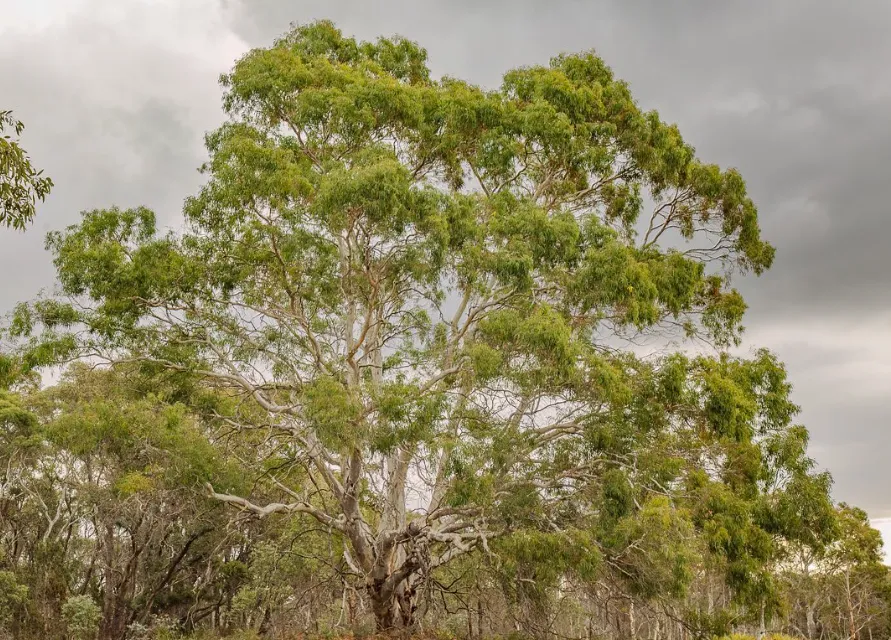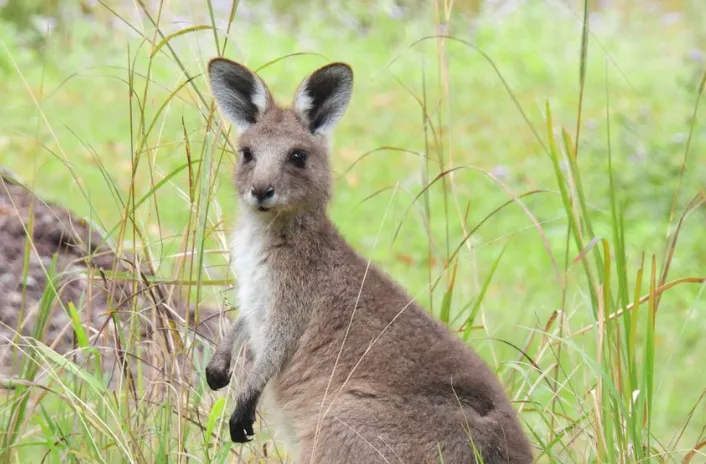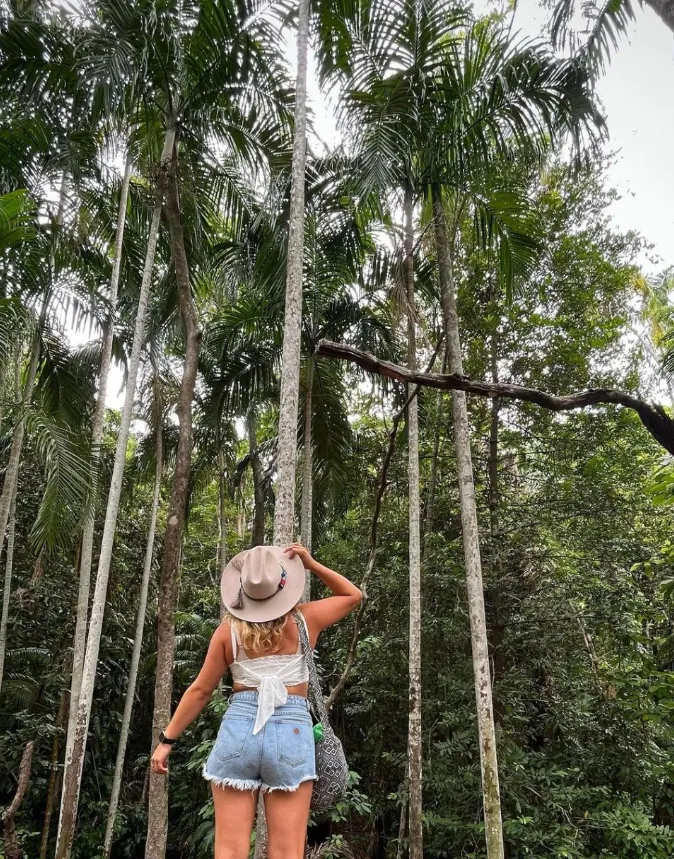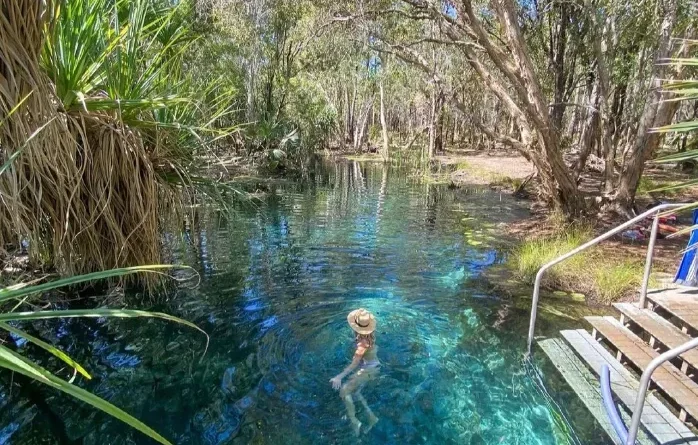The Local Flora and Fauna of Katherine: A Nature Lover’s Guide
Katherine is located in the Australian Northern Territory and is a paradise for nature lovers, featuring an abundance of flora and fauna that will appeal to anyone who has a deep appreciation for the natural world. This guide explores the plants and animals native to Katherine, including unique plant species found nowhere else, wide-ranging wildlife types and numbers, as well as mind-blowing sceneries that make this region so special.
Whether you are hiking through rugged Nitmiluk National Park or marvelling at ancient rock formations in Katherine Gorge, it won’t take long before you realise why many people regard this place as one of Australia’s greatest natural wonders. From lush rainforests during wet season to stunning dry season landscapes – there is something truly unforgettable waiting around every corner for those who love being outside!
World-famous Plant Species

The flora in Katherine is diverse and captivating due to its various climates and geological formations. The area’s plants are a testament to how ancient sandstones can coexist with each other alongside thriving rainforests on the same territory. Among these notable plants are eucalyptus trees, which represent outback Australia. These giants have unique barks that emit a fragrant smell when crushed between fingers; besides their ecological significance, they also provide homes or food sources for many different types of wildlife.
Another important group of plants found in Katherine includes flamboyant wildflowers that bloom throughout the region. Apart from being visually appealing, these flowers help maintain ecological equilibrium by attracting pollinators like bees and butterflies among others too numerous to mention here! The flowering season is especially dramatic with bursts of colour adding beauty into natural surroundings.
Native Plants
- Eucalypt Trees: They shelter and feed wildlife, which is an essential component within local ecosystems.
- Acacia Species: These have bright yellow flowers that can withstand arid conditions typical for NT.
- Kangaroo grasses: Resilient varieties able to cope well with changing climatic patterns across this region.
Changes in vegetation throughout seasons

Throughout the year, changes in seasons between wet and dry periods affect plant life within Katherine as elsewhere too. In other words, there are two main seasons here – the wet and the dry season with each having its own distinct characteristics when it comes to vegetation.
Wet Season
The transition from one period to another is always very pronounced regarding vegetation cover, especially during rainy months in Katherine, where it starts raining heavily from November up until April. This led everywhere to become green due to the high levels of precipitation experienced at that time, which supported rapid growth rates among plants found along riverbanks and inside rainforests. Thus, this marks peak vibrancy for these areas since waterfalls such as Edith Falls or Sweetwater Pool fully cascade down their steps. All kinds of native species take advantage by flourishing well under moist conditions provided by surplus amounts of water available then.
Dry Season
On the other hand, when May sets in till October, there occurs a remarkable decrease in the amount of rainfall recorded throughout this whole region, thus causing cooler temperatures as well as drier air masses, which make everything seem less lively than before, including landscapes themselves. The only colours visible during these months would be earthy tones represented by various shades of brown or grey prevalent all over hinterland views extending towards the horizon, especially where there are no trees at all except occasional shrubs scattered around plain areas here and there. It is during this time birds tend to migrate into Katherine Gorge National Park because they know food will be scarce otherwise; also you can easily access most panoramic spots offering great visibility over ancient rock formations around same park mentioned earlier on.
Katherine’s Fauna
Wildlife in its Natural Habitat

There are many different kinds of wildlife in Katherine, most of which can only be found in this area. The native mammals here are what usually attracts people who love animals. For instance, agile wallabies are very common as they bounce off through the undergrowth and the northern brush-tailed phascogale is one species that is difficult to spot. These creatures have adapted well to their environment with such behaviors and physical characteristics that enable them survive during both wet and dry seasons.
Bird watchers will find Katherine a paradise because there is a large variety of avian species living or passing through it at any given time. Birds coming from different places all over Australia find various homes around this region due to its diverse habitats, ranging from beautiful rainbow bee-eaters flying around to magnificent wedge-tailed eagles soaring high above clouds – this place has got everything! You can watch birds here throughout the year, whether they are migrants or residents.
Reptiles & Amphibians
Another group represented among Katherine’s fauna are reptiles and amphibians, which thrive well under the warm conditions that prevail here all year round thanks to the region’s hot climate. Some reptiles like goannas (monitor lizards), as well as different skinks, frequently appear within these parts, while frogs such as green tree frogs known for their bright colours, along with other species, including the northern corroboree frog, often come out during the rainy season when it is time for them to breed and feed.
These cold-blooded animals play an important role in maintaining ecological balance within the area by keeping insect populations under control besides serving as food for larger creatures thus forming part of intricate web of living things that characterizes this unique environment called Katherine.
Getting Closer To Nature In Katherine
When To Go And Which Routes To Take?

It is important that you choose the right time of year when planning your visit so as not to miss out on any natural beauty found in and around Katherine. Usually, people prefer the dry season, which has lower temperatures and clear skies, making it great for outdoor activities. During this time, one can take walks along trails like Jatbula Trail, where there are breathtaking views, or follow routes near Nitmiluk Gorge, which offers easy access to nature spots.
However, the wet season also comes with its own benefits, even though it is hotter and more humid compared to other times of the year. For example; higher water levels experienced in the river system during this period create an environment full of life that supports lush vegetation growth hence providing perfect conditions for those who love seeing everything green. Wet Season also gives a chance of getting closer to cultural heritage sites such as Aboriginal rock art locations as well traditional practices become more visible at such times.
Hints On Wildlife Watching

When interacting with flora and fauna in Katherine, you may want to consider some things that can help enhance your experience. To begin with, always treat animals kindly while keeping away from them so as not disrupt their normal way of doing things or put yourself into danger zone. If bird watching is what excites you then it is advisable to do so early morning or late afternoon hours since these are periods when many species are active thus giving one opportunity of spotting different kinds within short span.
It would be good if, before embarking on outdoor adventures, ensure an appropriate dress code plus carry necessary items like water bottles, sunblock creams & insect repellants, among others. Another idea would be visiting Nitmiluk Visitor Centre, which provides useful insights on biodiversity found within this area.
Conclusion
Katherine is incredibly beautiful, with a wide variety of plants and animals that attract people from all over the world who love nature. The city is among the best places to go for those who want to experience the real world in connection with nature because it has lots of different living organisms like flowers and trees, which are multi-coloured, as well as animals that are not found anywhere else on Earth; plus there are also many landscapes created by old geologic events which look very beautiful too.
Rainforests full of green trees and mountains with steep sides made from rocks and rivers flowing through deep valleys, canyons, etc., create perfect conditions for tourists’ rest. In this place, you have a chance to see such things as Nitmiluk National Park’s rough terrain and ancient rock art sites or just sit quietly looking at one of Katherine region’s stunning waterfalls – every time will be unique! Katherine Gorge Tours from Darwin provide a fantastic opportunity to explore these natural wonders, offering an unforgettable experience in the heart of the Australian outback.
There is nothing like getting close-up views of wildlife in their natural habitat, so embrace what it offers and be ready. Never forget about the Australian outback wherever you’re coming back home.
FAQs
What time of year offers the most opportunities for seeing wildlife?
The dry season between May and October provides the best opportunity for wildlife sightings due to cooler temperatures and clearer skies.
Are any species endangered within Katherine?
Yes, certain species such as the northern corroboree frog are currently classified as being under threat because their habitats have been destroyed or altered significantly by human activities.
Is it necessary to hire a guide when exploring the natural areas surrounding Katherine?
While having someone familiar with an area guide your exploration can provide context and increase safety levels achieved during visits but if one knows where they want to go then there may be no need for a guide.
What type of clothing should I bring for hiking trips?
Lightweight clothes that allow air circulation should be worn alongside sturdy boots designed specifically for walking on uneven surfaces or rugged terrain.
How can I donate towards conservation efforts being made locally?
You can donate towards local conservation efforts by volunteering your time and skills, donating money or other resources to relevant organizations involved with such matters, and practising eco-tourism.
